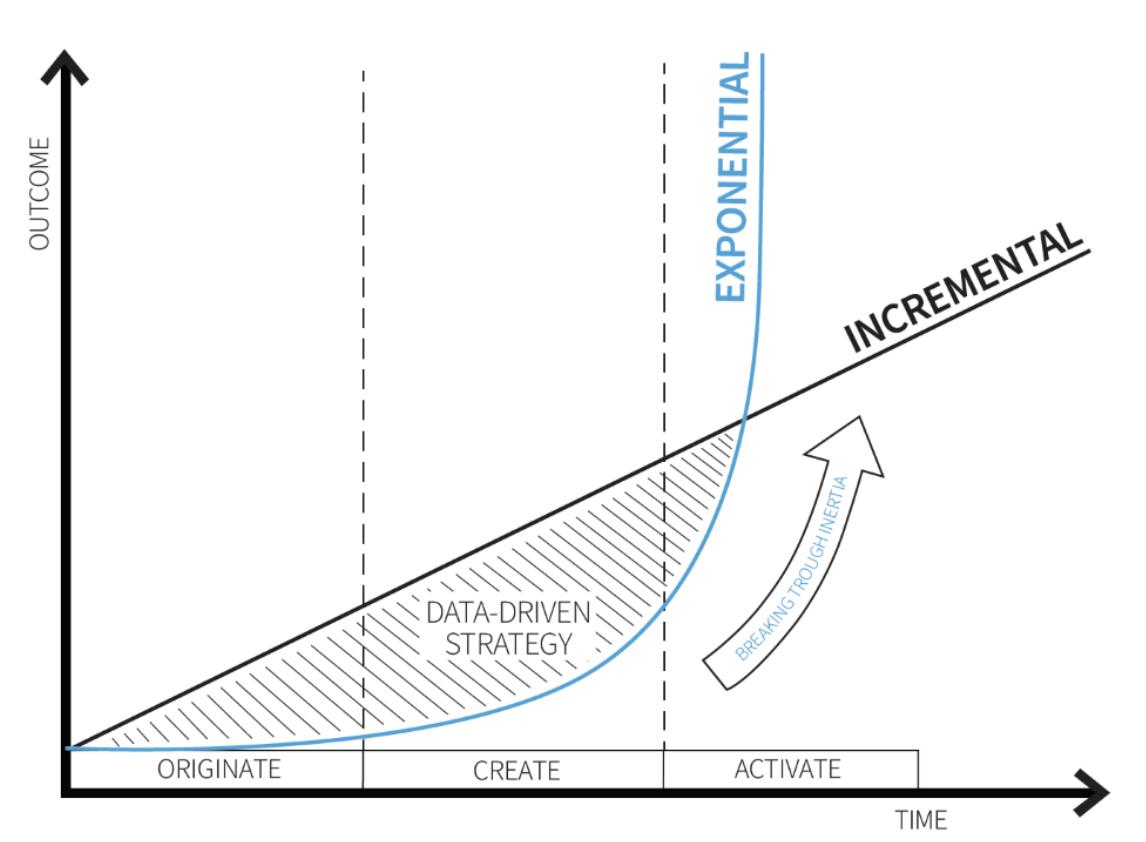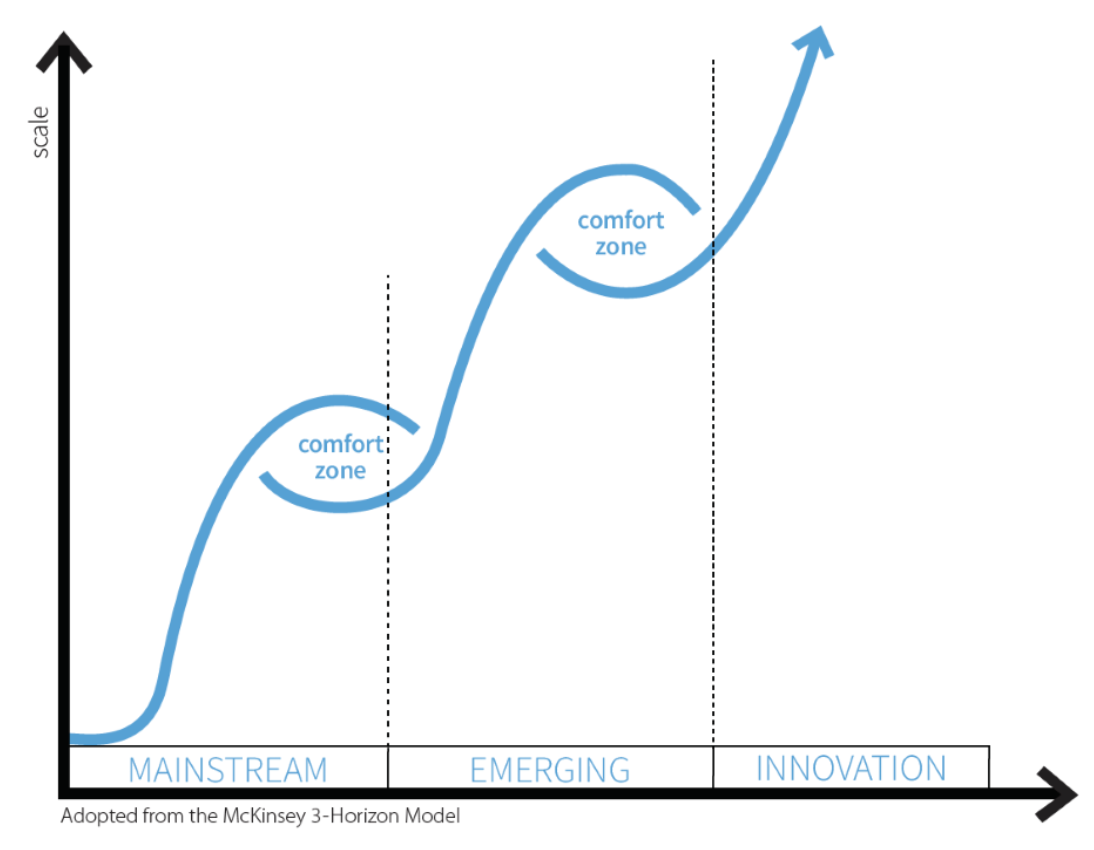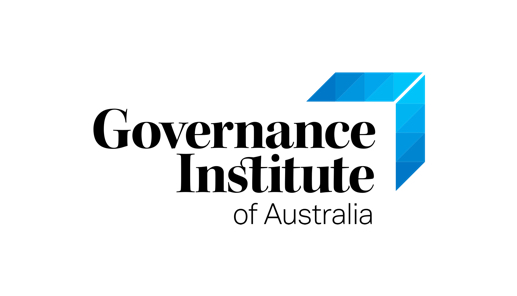In an environment of coronavirus chaos most of us are not consumed with organisational strategy but are instead overwhelmed with managing day-to-day operational challenges. And fair enough.
Organisations that can respond and adapt to a changing and turbulent economic environment are the ones most likely to prosper. Those that cannot or do not adapt, just wont.
The truly good leaders know that it is their responsibility to establish the foundation, or the vision, for what success needs to look like. To walk the talk. If leaders cannot inspire action, then where will it come from?
Strategic vision doesn’t simply come from a business case or a power point, it comes from the people. In fact, meaningful strategy doesn’t come from a whiteboard or an off-site executive weekend either. Successful leaders create the building blocks from which thinking momentum originates, developing into purposeful strategy, meaningful metrics, optimum execution and successful outcomes. Today, they need to be hands on, off and in.
Whilst those who wield power still shape the fate of a business, it is the astute ones that will actively strengthen connections to their teams and foster more creative space from which new ideas will evolve. Momentum must be generated at the company’s centre of gravity, its core of people.
To meet these demands many of today’s leaders may need to change their mindset and their behaviours. And besides, they have executed a psychological contract, a willingness to be the catalyst of change. They know that they must engage, interact and intervene.
In an environment of unprecedented change now more than ever we need to move on, to embrace uncertainty and be motivated by challenge and adversity.
Hanging onto yesterday’s outcome is irrelevant today. Leaders must inspire action and perhaps the most simplistic visual for us to consider is that sitting behind a desk is a very dangerous place from which to lead that.
Exponential Business.
When we talk about exponential business, we refer to the value it creates.
In order to produce exponential value we must create a shift from an incremental mindset that will make something better, to an exponential mindset that will make something different, and better. Bigger, and faster perhaps?
Incremental is linear – immediate and steady, whereas exponential is accumulating and accelerating. This is the paradigm shift between business models built on machinery, to business models that now leverage technology.

Let us consider the financial crisis brought about by the COVID-19 pandemic and three fundamental options for businesses that are to either survive, thrive or take a dive.
One option is to terminate. To shut up shop, to get out. You’ve had enough.
Another option is to hibernate, to lay low. To batten down the hatches, weather the storm and see it through to the other side ready to go again. But beware short-term survival at the expense of long-term sustainability as hibernating in this period of disruption at such scale, you may actually come out that far behind that incremental may not even ‘cut it’ any more
The game-changing option is to innovate. To use the current crisis as a means to find a different way of thinking and doing. To leverage uncertainty, roadblocks and bottlenecks into a new offering, a point of difference that solves new problems. This is the exponential mindset that unlocks future value.
Horizon Planning
Some businesses are reluctant to believe that they have a finite lifetime, that they have ‘always done it this way in the past’ and cannot see past an enduring existence. In order to achieve growth and a sustainable existence throughout their corporate lifetime, organisations must optimise existing businesses whilst creating opportunities for emerging or new opportunities.
In today’s fast-paced commercial world the horizons within which you need to step through are considerably more fluid than that, dependent upon such factors as globalisation, competition, regulation, innovation, expertise and technology for example – none of which operate to finite timelines or pre-arranged expiry dates.
It is the agile businesses that predict their horizon ahead of time, that are already looking for ways to innovate and capitalise current propositions.
It is unlikely that you will pin-point exactly your horizon transition date – and it’s pointless attempting to – however with the ability now to access considerable volumes of real time data you will have a very clear picture of what needs to change by when. And there needs to be an overlap period, a critical pre-planned point from which transformation can be managed.

Accelerating Change.
Industry-changing companies across the spectrum of business models are thriving on exponential thinking that enables experimentation, continuous improvement, and growth. Whilst mindset is the enabler or the how, technology is quite often the what.
Harnessing the power of technology is an important part of driving transformation and future growth, the innovation and reinvention that we all now refer to.
To make that quantum leap from incremental improvement to exponential growth can be frightening, however it is the shared mindset of what success could look like that will enable that leap. We need to trust it, made easier by the fact that we know where we will end up if we don’t. And remember that fail fast and move on is a considerably more exponential mindset as opposed to doing nothing which in reality could mean that you are going backwards, even faster!
Assuming exponential ‘just happens’ is delusional.
Successful transformations will produce the right organisational mindset and culture, starting with acknowledging the gap from incremental to exponential, committing to ‘unlearning’ ingrained and outdated management practice, and of course, learning new ways of thinking and doing.
The scope and scale of an organisation specific transformation depends upon such variables as the industry it participates in, the sectors within it, the macro and micro economy informing it and the point within a product or service’s life cycle.
Consider the following 5 Transformations from Which to Build Your Own Burning Platform for Change–
- Strategy Transformation powers an organisation’s growth engine. It is the compelling story, the ‘different thinking’ that will get a business to its next through market leading differentiation, through using data and experience to predict trends, to solve problems that don’t exist yet.
- Business Model Transformation is the ‘different doing’ that comes from the different thinking bought about by strategy transformation. This spectrum runs from a change in the customer-facing commercial proposition to a change in the metrics that a company uses to track performance. Ultimately, it is the continuum under which a business will rewrite its competitive playbook.
- Operational Transformation is simply doing core business better, faster, or cheaper. Whilst this doesn’t have to specifically be digital, in a rapidly changing world operational change is what will ensure cost efficiency and ultimately, sustainability. Sure, we might have a unique strategy in a blue ocean of opportunity however it will only be a matter of time before we will be yesterday’s news without a mindset of doing better with same, or more with less.
- People Transformation is not only enhancing the culture within which people will optimise performance, it is a mindset of incentivising future capability. It is a forward-looking approach to building the competency bridge between the organisation’s what now and what’s next. The critical success factor here is acknowledging that the definition of people starts with the top, and it extends outside.
- Performance Transformation is quite simply the efficiency gain through the sum of all of the parts. It is connecting all of the components and capability that will maximise a commercial, environmental and societal impact, for example. It is the measure by which a compelling business proposition will be sustained, or not.
Unless you are a start-up with a proven minimum viable product and exponential is your only way to the top, fast, it is important for existing businesses going through this transformation to acknowledge the stability or temporary comfort zone that retaining some incremental ‘business as usual’ thinking will bring.
You will need cash flow to procure exponential technology and people, and you will need ‘business as usual’ as the platform to shift your customers, your people and your offering.
Whilst exponential thinking is needed to realize 10x future growth, incremental thinking may just retain or bring surety to, say, 10% of your viability whilst you get there. And both will co-exist in an exponential enterprise.
The frenetic pace of change, and the urgency required to respond, makes any challenge significant from a leadership perspective. When it comes to business transformation, the one certainty about the future is that the pace of change will only accelerate.








